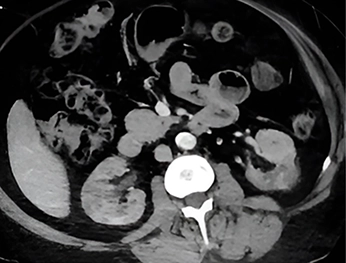North Carolina Stroke Survivor Gets Second Act Thanks to Wife’s Awareness of Need to Act FAST

Chuck Carree, a celebrated former sportswriter for the Wilmington Star News, was shocked when, last December, he was unable to utter a word.
“I remember looking at my wife, but I couldn’t speak,’ Chuck said.
Luckily, Chuck’s wife, Paige Owens, realized something was seriously wrong straightaway. She said she knew her husband had a stroke when he looked up at her. “Half of his face was drooping, and he couldn’t communicate,” said Paige, who immediately dialed 911.
Paige credits her speedy response to her familiarity with “B.E. F.A.S.T.” – a widely promoted acronym that teaches the telltale signs of stroke and the critical need to contact emergency services immediately. Face drooping, arm weakness, and speech difficulty are the outward signs that it’s time to call 9-1-1. “I knew getting Chuck to the hospital quickly was important and could be a matter of life or death,” she said.
FAST-FORWARD
Everything that followed seemed to move at lightning speed, according to the couple, who reside in North Carolina. It was a Friday afternoon and the paramedics came quickly. Within an hour after arriving at Novant New Hanover Regional Medical Center, the blood clot that caused Chuck’s stroke had been removed from his brain. Chuck’s speech returned almost immediately, and, by Monday, he was released from the hospital with little to no disability. “It all really did happen so fast,” Paige said.
“The actual procedure to restore blood flow in the brain only took about five minutes,” said Dr. Jeffrey Beecher, Director of Neurosurgery at Novant Health, NHRMC Neuroscience Institute. “In Mr. Carree’s case, we performed a mechanical thrombectomy by inserting a tube-like catheter into the radial artery of his right wrist and then tracking it up to the left side of his brain. Once to the area where the stroke was occurring, we removed the clot and started to see Mr. Carree improve almost immediately.”
TIME IS BRAIN
More than 795,000 people experience stroke in the United States each year.1 It is a leading cause of death in the United States and is a major cause of long-term disability for adults.1 When a stroke occurs, every minute counts – nearly 2 million brain cells die every minute a severe stroke goes untreated.2 With early intervention and access to advanced stroke treatments such as mechanical thrombectomy and other minimally invasive procedures, blood flow to the brain can be restored quickly and patients’ chances of living full, independent lives upon recovery significantly increases.
Knowing the signs of stroke is key to successful patient outcomes. The acronym BE FAST can help individuals identify key signs of stroke:
- Balance: loss of balance or coordination, trouble walking
- Eyes: decreased vision, double vision, or total loss of vision
- Face: muscle weakness on one side of the face that causes it to droop
- Arm: muscle weakness in the arm or leg
- Speech: trouble speaking or understanding others who are speaking
- Time: Call 9-1-1 immediately upon experiencing any of the outward symptoms listed above. Even if only one of these symptoms appears or if symptoms appear intermittently or go away altogether.
Important Safety Information
Additional information about Penumbra’s products can be located on Penumbra’s website at https://www.penumbrainc.com/products/red-reperfusion-catheters/. Caution: Federal (USA) law restricts these devices to sale by or on the order of a physician. Prior to use, please refer to Instructions for Use for complete product indications, contraindications, warnings, precautions, potential adverse events, and detailed instructions for use. Risk information can be found at peninc.info/risk.
The clinical results presented herein are for informational purposes only, and may not be predictive for all patients. Individual results may vary depending on patient-specific attributes and other factors.
Sources:
1. Centers for Disease Control and Prevention. Stroke Facts. https://www.cdc.gov/stroke/data-research/facts-stats/. May 15, 2024. Accessed: August 16, 2024.
2. National Institutes of Health. Stroke – Assess and Treat. https://www.ninds.nih.gov/health-information/stroke/assess-and-treat. Last reviewed: May 20, 2024. Accessed: August 16, 2024.
Related Articles
-
 Health
HealthLightning Bolt® 7 Case Study: Rapid Revascularization of Bilateral Renal Artery Occlusion with Computer Assisted Vacuum Thrombectomy (CAVT™)
November 5, 2024 -
 Health
HealthLatest Findings from Penumbra’s STRIKE-PE Study to be Presented at the 2024 Transcatheter Cardiovascular Therapeutics (TCT) Conference
October 24, 2024 -
 Health
HealthGet Out the Clot Campaign Brings Together Leaders and Experts to Improve Patient Care for Venous Thromboembolism
October 10, 2024 -
 Health
HealthRecent Data Show Positive Outcomes of Penumbra’s BENCHMARK™ BMX®81 System for Radial Access during Neurovascular Interventions
September 16, 2024
